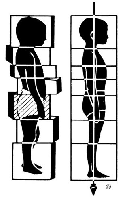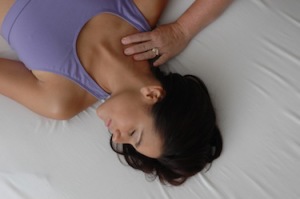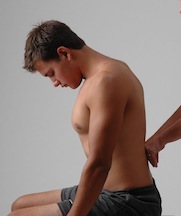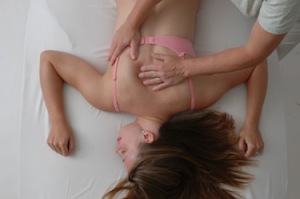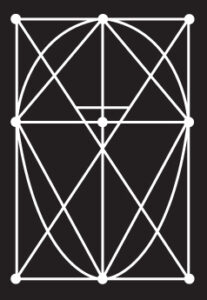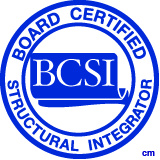Click on any question.
Yes, Rolfing and massage are different.
There are many different types of massage and massage techniques. The goals of massage, among other things, are relaxation and stress relief. Massage does not involve improving your posture and structure in order to achieve these goals.
Rolfing is not a technique, it is a powerful, comprehensive method for facilitating transformational change.
The goals of Rolfing are to improve your posture, structure and ability to move with ease. Rolfing treats your whole body as a system participating in a pattern. Improving the structure and function of this pattern may address many of the root causes of pain and loss of function.
In addition, Rolfing supports you as you gain awareness of the things you do in your daily life that contribute to your discomfort and easily learn healthier ways to be present in your body. Chronic stresses, strains and discomforts may disappear as you gain new awareness and capacity for healthy movement through the Rolfing series.
You may look forward to results that are visible, measurable and long-lasting.
* Rolfing is not involved with the treatment of disease of any kind, nor does it substitute for medical diagnosis or treatment when such attention is needed.
I have found that adding Somatic Experiencing (SE) to a Rolfing session makes it easier to accomplish the goals of the session.
Here’s why:
When our nervous system is highly activated, we have a tendency to adopt postures of bracing, self-defense and/or collapse. This contributes to the tension patterns in your body which cause the discomfort that brought you to my office in the first place. If your nervous system is highly activated and we do not address it, your body may even resist or brace against the Rolfing bodywork. This is the opposite of the results we are looking for.
It is helpful for both of us to become aware of how your tension patterns are triggered by nervous system activation.
It then becomes more clear which parts of your patterns are related to structural issues in your body and which parts may be unintegrated trauma responses. Through SE, I can help you learn how to calm and regulate your nervous system and support the completion of unintegrated trauma responses.
In addition, we can slow things down enough so we can start to notice how you move out of these tension patterns in your own way. Then we can add Rolfing bodywork to assist the process of moving out of these tension patterns.
SE is the way we address your nervous system. Rolfing is the way we address your structure. In combination, we can more effectively get you on your path to healing.
* Rolfing is not involved with the treatment of disease of any kind, nor does it substitute for medical diagnosis or treatment when such attention is needed.
Rolfing is right for you if you have postural problems, injuries and/or chronic discomforts that interfere with daily activities.
Rolfing is right for you if you have already tried several other therapeutic interventions and feel like they didn’t fully address your underlying problem. If you want to feel better in your body and easily learn healthier ways to use your body, Rolfing is right for you.
You will probably have a strong feeling that Rolfing is right for you before you make your first appointment.
However, if you are unsure, please contact me and we can discuss any concerns you may have. The best way to find out is to try one session. There is no obligation to continue with the series if you decide that Rolfing is not appropriate for you.
A typical Rolfing series may not be appropriate for you if you have certain health conditions like fibromyalgia or osteoporosis.
If you feel you could benefit from Rolfing, and have a complicating health condition, I am able to work with you in a different way using a combination of SourcePoint Therapy® and Somatic Experiencing®. In this way, we can achieve the goals of your sessions using no touch or very gentle touch.
* Rolfing is not involved with the treatment of disease of any kind, nor does it substitute for medical diagnosis or treatment when such attention is needed.
If you are feeling hesitant to try Rolfing because you worry it might be too painful, please take a moment to consider how you are thinking about pain.
Are you thinking of harmful experiences you have had in the past? You may already be suffering from the effects of these experiences. Rolfing does not inflict this pain. On the contrary, Rolfing can help relieve your ongoing suffering from painful past experiences.
The perception of pain varies greatly from person to person and you have your own unique tolerance level.
For this reason, I have learned many different ways to maintain your comfort. In addition, it is important for us to have open communication concerning your comfort to ensure the appropriate kind of touch is used at all times.
Rolfing can be, at times, relaxing and pleasurable, at other times, somewhat uncomfortable. However, this discomfort is brief and associated with the release of chronic tension, rather than the experience of harm. I will always adjust the quality of touch to match your tolerance level.
As described elsewhere, I am happy to use Somatic Experiencing and SourcePoint Therapy techniques and only gentle touch during your sessions. The choice is yours.
* Rolfing is not involved with the treatment of disease of any kind, nor does it substitute for medical diagnosis or treatment when such attention is needed.
It is important that you refrain from using lotion or body oil before your Rolfing session. I also ask that you refrain from wearing perfume or cologne.
I will ask you to stand and walk periodically during your session. For this reason, please wear clothing that you feel comfortable being seen in. Workout attire like jogging shorts or other athletic shorts are best, as are athletic bras. If you choose to have movement oriented or light touch sessions, you will be able to remain fully clothed for your session.
At the beginning of your first session I will ask you to fill out a consent form and I will ask questions concerning any health issues you may have, as well as your goals for your Rolfing series. We will have time to discuss any questions you may have. Then I will ask you to stand and walk a little so we can analyze your posture and determine the goals of the session. Your session will last approximately 60 minutes and will end with a second postural analysis so we can notice how you experience the session.
Many people feel energized and hopeful after their first session.
However, you may feel relaxed and possibly a bit tired. You may also feel somewhat sore during the following day, like after a vigorous workout. Although it is not necessary, you may want to consider keeping your evening free after your first session and to have a physically light day the next day. If you choose non-touch or light touch sessions, you are not likely to feel any soreness the next day.
*Rolfing is not involved with the treatment of disease of any kind, nor does it substitute for medical diagnosis or treatment when such attention is needed.
If you’re seeking a way to heal not just in your mind but in your body and spirit, the combination of Rolfing® Structural Integration and SourcePoint Therapy® together offer a powerful, holistic approach to recovery and transformation.
Trauma can leave a deep imprint – physically, emotionally, and energetically. It can feel like carrying a weight you can’t see but constantly sense.
Rolfing Structural Integration may support the release of deep-seated tension in the body; unraveling patterns of pain, and restoring natural alignment. Trauma often leaves us bracing, tightening, and shrinking – physically and emotionally. Rolfing intends to gently help you open up to reclaim your natural posture and range of motion. As your body finds balance, there may often be a sense of relief and liberation, a feeling of standing taller both physically and emotionally.
SourcePoint Therapy complements this process by addressing the energetic side of trauma. While Rolfing supports the release of what’s been held in the tissue, SourcePoint supports your connection to an energetic blueprint for health – a deeper source of stability and coherence. In this way, it may help clear blockages, calm the nervous system, and create a sense of safety and ease. Trauma can disrupt the flow of energy in your body, making you feel disconnected or fragmented. SourcePoint Therapy supports the gentle restoration of this flow and the possibility of feeling more whole, grounded, and present.
Together, Rolfing and SourcePoint Therapy may create a profound synergy:
🌿 Physical and Emotional Release: Rolfing supports freeing the body from the grip of old trauma while SourcePoint Therapy energetically supports the soothing and balancing of the energy field.
🦋 Grounding and Integration: As Rolfing supports the re-alignment of your body, SourcePoint Therapy may help you integrate these changes energetically, reducing overwhelm.
🌿 Deeper Self-Connection: Trauma often creates a disconnection from the body; this approach may help you rediscover a sense of remembering, presence, and self-compassion.
🦋 Support for Transformation: If you are seeking not just healing but true transformation, this combination has the potential to help you shed old patterns and step into a more authentic, empowered version of yourself.
Healing from trauma is not a linear path – it is a journey of rediscovery and reclamation. If you’re ready to explore a deeper, more embodied way of healing, the blend of Rolfing and SourcePoint Therapy could be a powerful step toward reclaiming your body, your energy, and your life.
“In a complex world, simplicity has great power. SourcePoint Therapy is a simple approach to healing for the 21st century.”
Bob Schrei
* SourcePoint Therapy® is a simple approach to energy work not intended to diagnose or treat any specific symptom or illness. For medical conditions, please consult your healthcare provider.
** Rolfing is not involved with the treatment of disease of any kind, nor does it substitute for medical diagnosis or treatment when such attention is needed.
